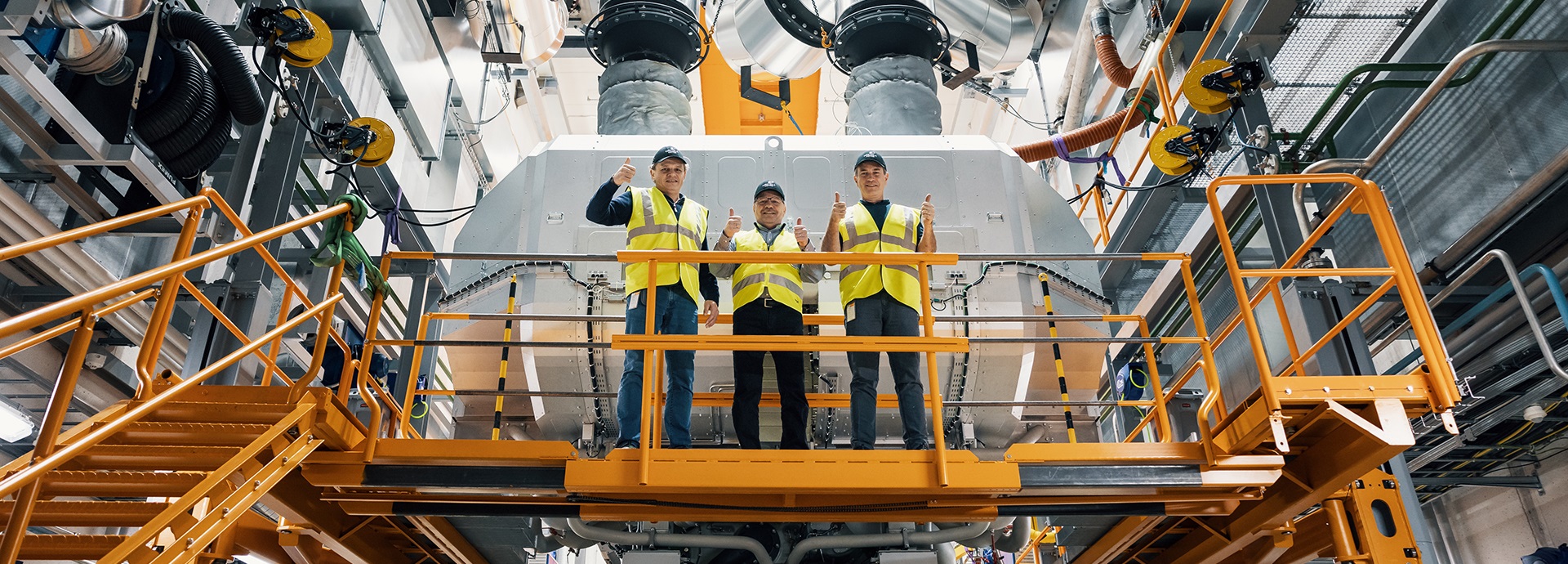
Case studies

What’s the secret to successful collaboration when introducing a new engine?
Being a pioneer is both risky and rewarding. When Royal Caribbean Group became the first customer for the new Wärtsilä 46TS-DF engine, they knew the rewards it could bring. But during the collaboration with Wärtsilä on its introduction, what was needed to make sure they could realise the engine’s full potential?
Cruise guests expect nothing but the best when they book a vacation with one of Royal Caribbean Group’s (RCG) cruise lines. That’s why the company chose the new Wärtsilä 46TS-DF engine for its new Royal Caribbean International ship, Utopia of the Seas. The engine supports requirement for guest maximum comfort with low noise and vibration as well as RCG’s need for excellent fuel efficiency and low emissions.
The Oasis class vessels are the largest cruise ships sailing today. The latest in this prestigious line of six vessels, Utopia of the Seas, is expected to launch in 2024. The company has installed many Wärtsilä engines over the years, but this first-of-series engine demanded a more extensive collaboration project.
A first-of-a-kind engine for a pioneering operator
“It is very important to introduce new technology on our ships in order to continue advancing our net zero ambitions while providing an exception experience for our guests,” explains Laurent Tessier, Technical Manager for Royal Caribbean Group.
With built-in upgradability and fuel flexibility, the Wärtsilä 46TS-DF can help power a more sustainable future for shipping. It represents the next generation of medium-speed engines. It is designed to set a new benchmark for fuel efficiency and emissions performance, and is ready to run on future fuels.
The engine supports maximum comfort with low noise and vibration expected from guests as well as Royal Caribbean Group’s need for excellent fuel efficiency and low emissions.
Tessier says that introducing a new engine is always challenging but Royal Caribbean Group was up for the challenge in order to introduce a new engine that helps them meet their decarbonisation targets. The journey so far has taken around three years, starting with the decision to use the engine, collaborating on its development and introduction, signing the contract and, now, successful factory acceptance tests. Getting to this point has meant lots of close teamwork between Royal Caribbean, Wärtsilä, and French yard Chantier de l’Atlantique. The team can now continue with delivering the engines to the yard and starting commissioning.
Everyone’s a winner
Tessier believes that the close collaboration benefitted all three parties. For Royal Caribbean Group, it helped them learn the new engine’s functionalities and technologies. For the yard, it helped with integration work. Wärtsilä also got valuable experience and insight that led to improvements on the original design.
Glenn Mattas, Sales Director at Wärtsilä, notes the importance of the new technology qualification process run together with Royal Caribbean Group and DNV. “We got some good feedback and a few things led to some modifications in our design. So, it was a good thing that we got the customer’s direct feedback on the design of the engine, which will serve us for the future as well.”
Successful factory acceptance tests
Royal Caribbean Group chose the Wärtsilä 46TS-DF for its power density and lower fuel oil consumption - much lower than the previous version of the engine. Efficient engines are essential in helping the company reach its sustainability targets. The engine was also chosen for its ability to meet guest demands – primarily minimal vibration, emissions and noise. It’s no surprise then that these were a focus of the factory acceptance tests carried out in Vaasa, Finland in November 2022.
“The first thing to check is the performance,” shares Tessier. “For us specific fuel oil and gas consumption is very important. We also check the vibration, the normal behaviour of the engines, different loading points, transient operations and also safety,” he continues. “We know this is a first-of-series engine, but I was impressed by the quality, behaviour and performance during the test.”
The secret to success? No secrets
Reflecting on the collaboration Tessier, Mattas and Dominique L’Hostis, Project Manager of the Machinery Department for Oasis of the Seas at the yard Chantier de L’Atlantique all agree: the key to success was open, transparent communication.
Efficient engines are essential in helping the company reach its sustainability targets. The engine was also chosen for its ability to meet guest demands – primarily minimal vibration, emission and noise.
“It took a bit of time to learn about each other’s skills, competencies and experience,” says Tessier. “But with good spirit and transparency and close communications channels Royal Caribbean Group has much better knowledge of the engine and the technology,” he adds. “Thanks to the transparency and open-minded orientation you get closer to the solution to fix any issues faster and better.”
Mattas agrees: “From Wärtsilä’s side, especially R&D, in the beginning it was a challenge to open up and discuss the details with the customer. It’s not something that we do every day. But after a while, things opened up and we had very good dialogue.”
“The best way is always to have clear communication and transparency. If we have a problem, we tackle it together and put it behind us,” says L’Hostis. “A lack of transparency from the supplier would mean that something is being hidden.
The collaboration is seen as a big success by all parties and sets a great benchmark for future projects as Royal Caribbean Group continues on its journey to greener cruising. “Wärtsilä is a good partner to help us achieve our long-term target of net zero emissions and our mid-term target of delivering a net zero cruise ships by 2035,” concludes Tessier.
Learn more about the new Wärtsilä 46TS-DF engine




